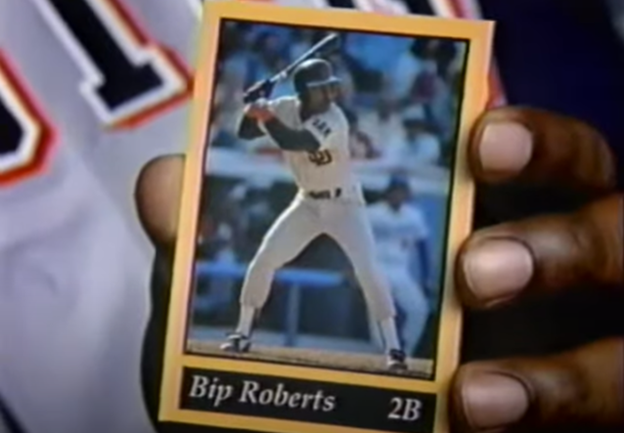
The year is 1995. San Diego teammates Bip Roberts and Tony Gwynn, seated in an empty dugout, reflecting on a hard-fought labor battle or perhaps the loving touch of an Arizona spring afternoon breeze, are talking about baseball cards. In particular, Roberts’ own 1986 rookie card, which he declares to be worth $275. “Twenty years from now,” he confides, “Who knows? One thousand, two thousand…”
Gwynn, idly thumbing through a price guide, corrects him, noting that it’s actually worth four cents. In excellent condition, Roberts retorts; ten cents in mint.
Roberts isn’t much of an investment adviser, as it turns out. That ten-cent card, through the magic of inflation, would need to double in value just to keep up with the cost of living. In real life… well, it hasn’t. Ironically, the baseball card bubble had already burst by the time the commercial aired, thanks to the combined forces of the lockout and the industry’s mutually assured destruction through vast overproduction. Roberts’ true rookie card (technically 1987, not 1986; Bip did have a trio of 1986 cards, but they were available only through hobby stores, not standard sets, so did not count at the time) came in what would later be described as the “junk wax era,” as producers cranked out cardboard at unfathomable rates. It is not worth 20 cents.
Comments are closed.